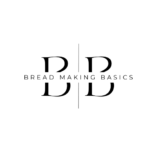This site may contain affiliate links to products. We may receive a commission for purchases made through these links.
Baking bread at home is a rewarding endeavor that allows you to savor the aroma of freshly baked loaves and experience the satisfaction of creating something with your own hands. While a Dutch oven is often recommended for achieving that perfect crust and crumb, fear not if you find yourself without one. Let’s chat about some innovative alternatives that can help you bake delicious loaves of bread with impressive results. I will share some tips to ensure your bread-making journey remains as satisfying as ever.
1. Baking Stone or Pizza Stone: A baking stone, also known as a pizza stone, is a fantastic substitute for a Dutch oven. Preheat the stone in the oven to ensure it’s piping hot before sliding your proofed bread onto it. The stone’s heat retention and ability to distribute heat evenly mimic the Dutch oven’s enclosed environment, resulting in a crispy crust and well-developed interior.
2. Cast Iron Skillet with a Lid: If you own a cast iron skillet with a well-fitting lid, you’re in luck. Preheat the skillet in the oven and transfer your dough onto the hot surface. Cover with the lid to trap steam, and you’ll achieve a similar effect to a Dutch oven. Just make sure the handle of the skillet can withstand the high baking temperatures.
3. Cloche or Clay Baker: A cloche, a French term for “bell,” is a round or oval-shaped domed lid made from ceramic or clay. It mimics the steamy environment of a Dutch oven, allowing your bread to rise and bake beautifully. Place your dough on a preheated cloche base, cover with the lid, and let the magic unfold.
4. Stainless Steel Bowl and Baking Tray: Create a makeshift oven within your oven by placing a stainless steel bowl upside down on a baking tray. Preheat both in the oven, and once your dough is ready, carefully place it on the hot tray. Quickly cover with the preheated bowl to trap steam. This method requires a bit more finesse, but it can yield satisfying results.
5. Parchment Paper Sling and Pot Lid: Craft a parchment paper sling to lift your dough into a preheated pot or pan. After transferring the dough, cover with a lid that can withstand the oven temperature. While not as airtight as a Dutch oven, this method still captures some steam and can help you achieve a desirable crust.
6. Steamy Oven: Simulate a steamy environment by placing a shallow pan of hot water on the bottom rack of your oven while baking your bread on a separate rack. The steam generated can help create a crusty exterior. Be cautious when adding and removing the pan to avoid burns. I also recommend laying a towel over the oven glass when adding or removing the pan as boiling water could shatter the glass.
7. Double Baking Sheets: Place your bread on a preheated baking sheet, then cover it with an inverted second baking sheet. This method won’t trap steam as effectively as other options, but it can still aid in achieving a crisp crust.
Pros and Cons of Alternatives: While these alternatives can yield excellent results, they may have certain pros and cons compared to a Dutch oven.
Pros:
- Cost-effective: Most alternatives involve items you may already have at home.
- Versatile: You can adapt these methods to suit different bread recipes and shapes.
- Creative: Exploring alternative baking methods can be a fun experiment in your bread-making journey.
Cons:
- Steam Control: Alternatives may not retain steam as effectively as a Dutch oven, potentially affecting crust development.
- Handling: Some methods require careful handling to avoid burns or mishaps.
- Trial and Error: It might take a few tries to achieve the desired results and perfect your chosen method.
Don’t let the absence of a Dutch oven deter you from pursuing your bread-making passion. With a little ingenuity and some trial and error, you can use these alternative methods to create delicious, homemade bread that will impress your family and friends. Whether you opt for a baking stone, a cast iron skillet, or another creative approach, the joy of bread baking remains within reach. So, roll up your sleeves, preheat your chosen vessel, and let the aroma of freshly baked bread fill your kitchen once more. Happy Baking!
